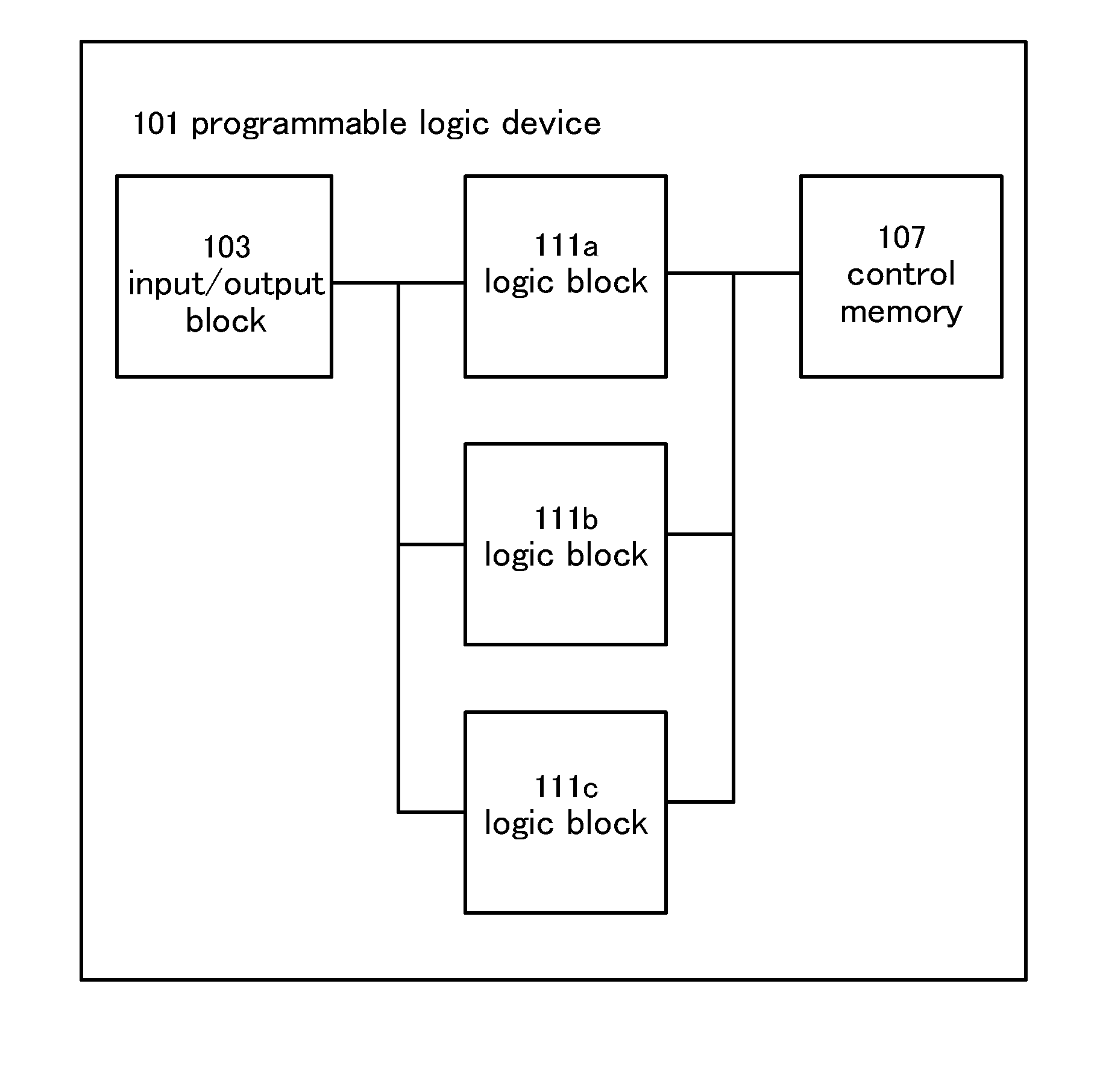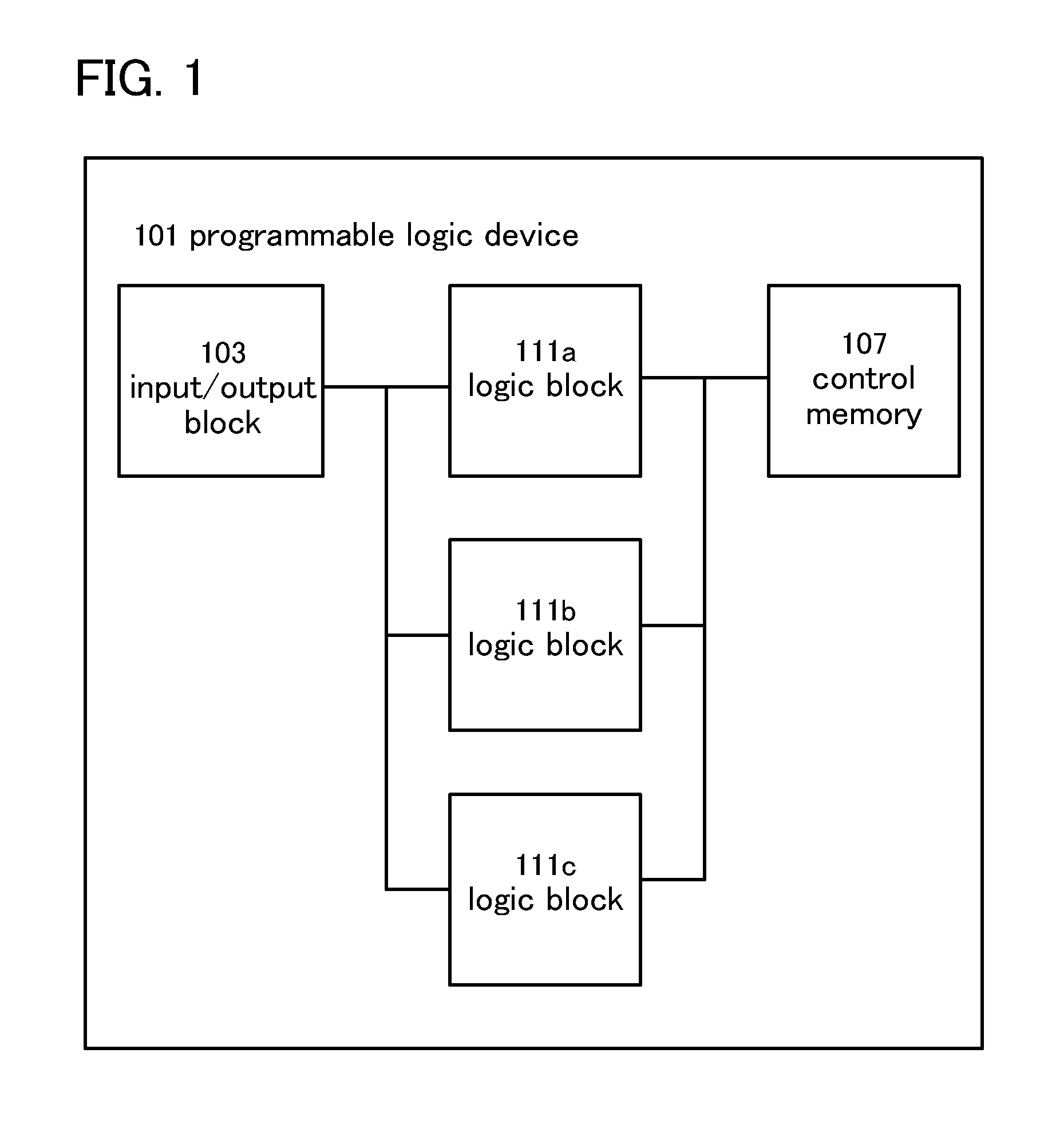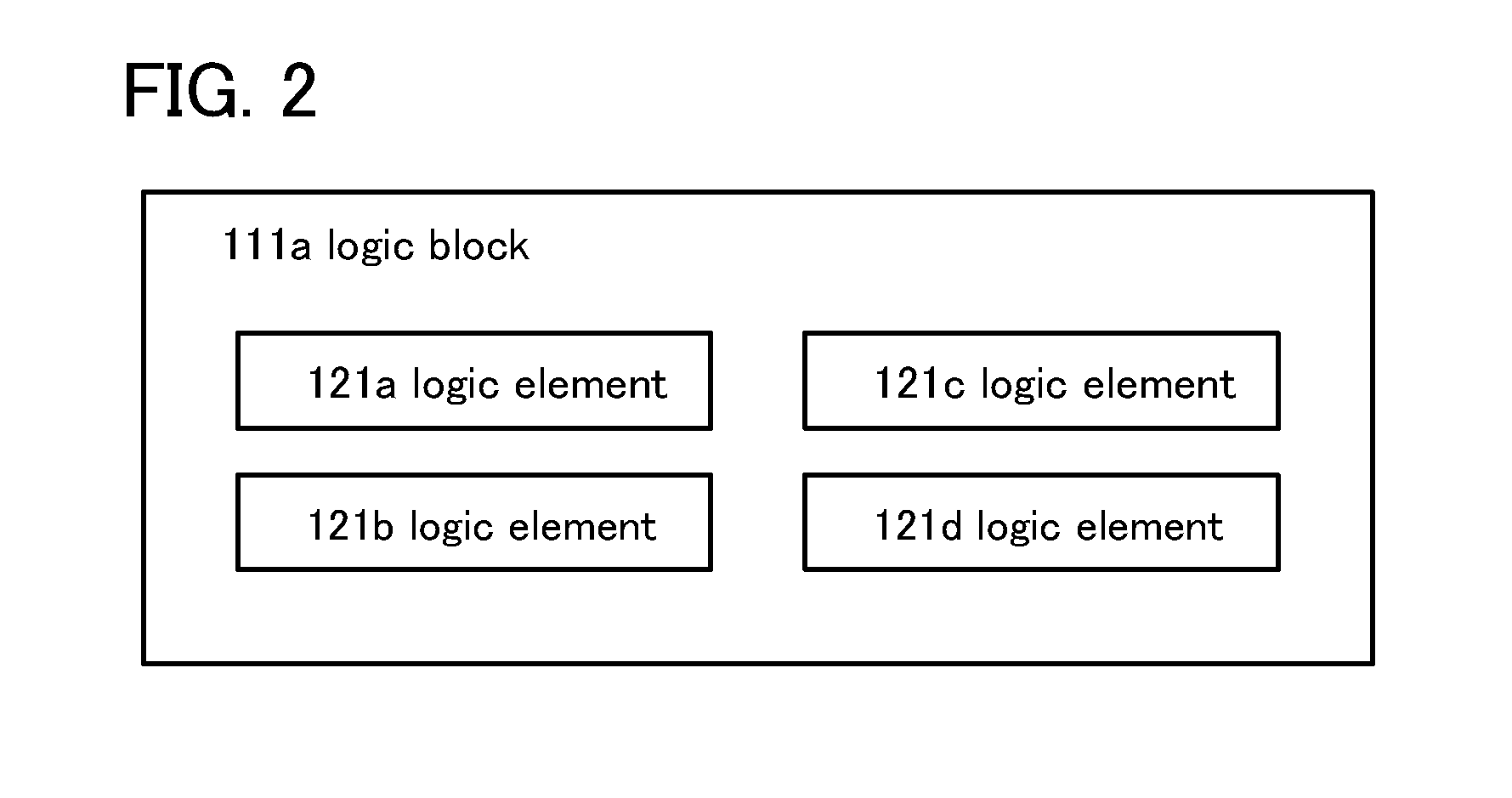Programmable logic device
a logic device and programmable logic technology, applied in the field can solve the problems of low power consumption of programmable logic devices, high writing voltage of eeproms, and limitation of the number of reads of ferams, etc., to achieve high integration, low power consumption, and short start-up time
- Summary
- Abstract
- Description
- Claims
- Application Information
AI Technical Summary
Benefits of technology
Problems solved by technology
Method used
Image
Examples
embodiment 1
[0058]One mode of a programmable logic device is described with reference to FIG. 1, FIG. 2, FIG. 3, FIGS. 4A to 4C, FIG. 5, FIG. 6, and FIG. 7.
[0059]FIG. 1 is a block diagram of one mode of a programmable logic device 101. The programmable logic device 101 includes an input / output block 103; a plurality of logic blocks 111a, 111b, and 111c, which have various functions; wirings; and a control memory 107; which are provided on the periphery of the programmable logic device 101. The connection of the wirings can be changed by a switch or the like.
[0060]The input / output block 103 controls transmission and reception of signals between the programmable logic device and the outside thereof. For typical example, the input / output block 103 sets a signal input from or output to an external terminal of the programmable logic device.
[0061]The control memory 107 holds data (configuration data) to be written to configuration memories included in the logic blocks 111a to 111c. The control memory...
embodiment 2
[0128]In this embodiment, a method for manufacturing the programmable logic device described in Embodiment 1 is described with reference to FIG. 7, FIGS. 8A to 8D, FIGS. 9A to 9C, FIGS. 10A to 10C, and FIGS. 11A and 11B. Here, the memory element 141 which has the transistor 161 including an oxide semiconductor film and a buffer functioning as the arithmetic circuit 163 as illustrated in a circuit diagram in FIG. 7 is described as a memory element. Specifically, as a method for manufacturing the programmable logic device, a method for manufacturing the transistor 161 including an oxide semiconductor film and the first n-channel transistor 163a and the first p-channel transistor 163b which form the buffer is described. Note that in FIGS. 8A to 8D, FIGS. 9A to 9C, FIGS. 10A to 10C, and FIGS. 11A and 11B, cross-sectional views taken along a line A-B each correspond to a cross-sectional view of a region where the transistor 161 including an oxide semiconductor film, the first n-channel t...
embodiment 3
[0257]In this embodiment, a method for forming the oxide semiconductor film 229 described in Embodiment 2 using a CAAC-OS will be described.
[0258]The first method for forming the oxide semiconductor film 229 using a CAAC-OS will be described below.
[0259]In the case where a sputtering method is employed in the method for forming an oxide semiconductor film to be the oxide semiconductor film 227 described in FIG. 9B in Embodiment 2 in forming the oxide semiconductor film 229 using a CAAC-OS, the substrate temperature is set to be higher than or equal to 150° C. and lower than or equal to 450° C., preferably higher than or equal to 200° C. and lower than or equal to 350° C., so that entry of water (including hydrogen) to the oxide semiconductor film can be prevented and a CAAC-OS including crystals can be formed.
[0260]The oxide semiconductor film is heated after formation using a CAAC-OS by the above-described method releases further hydrogen from the oxide semiconductor film 227, can ...
PUM
 Login to View More
Login to View More Abstract
Description
Claims
Application Information
 Login to View More
Login to View More - R&D
- Intellectual Property
- Life Sciences
- Materials
- Tech Scout
- Unparalleled Data Quality
- Higher Quality Content
- 60% Fewer Hallucinations
Browse by: Latest US Patents, China's latest patents, Technical Efficacy Thesaurus, Application Domain, Technology Topic, Popular Technical Reports.
© 2025 PatSnap. All rights reserved.Legal|Privacy policy|Modern Slavery Act Transparency Statement|Sitemap|About US| Contact US: help@patsnap.com



